

Global high-mix volume high-speed PCBA manufacturer
9:00 -18:00, Mon. - Fri. (GMT+8)
9:00 -12:00, Sat. (GMT+8)
(Except Chinese public holidays)


Global high-mix volume high-speed PCBA manufacturer
9:00 -18:00, Mon. - Fri. (GMT+8)
9:00 -12:00, Sat. (GMT+8)
(Except Chinese public holidays)
HomePage > Blog > Knowledge Base > Motion Sensors Circuits: A Comprehensive Guide
The motion sensor circuits are, in a way, the heart of many modern electronic applications, playing a crucial role in automation, security, and energy efficiency. These circuits use sensors of different types to detect motion and are integrated with systems that can trigger actions based on movement—be it when you enter a brightly lit room or when you activate a home security system, motion sensor circuit operation makes it all possible.
Dependence on automation and the Internet of Things (IoT) has increased, whereby the demand for motion sensor circuits in PCB-based projects is on the rise. Their versatility in various fields, including residential, commercial, and industrial applications, makes them even more helpful. That increased usage makes it even more important to understand how the circuits work and how to effectively design them.
In this guide, we will cover the basics of motion sensor circuits, delve into their working principles, look at the different types, and discuss how to design and build them. By the end of this article, you should have a firm understanding of motion sensor circuits and practical applications to confidently implement them in your PCB projects.
Motion sensor circuits form an integral part of every system designed for motion detection and response. At the heart of these circuits are specially designed sensors placed to detect motion within a predefined area and translate this motion into usable outputs—be it the turning on of an alarm, light, or camera, depending on the application they are put to.
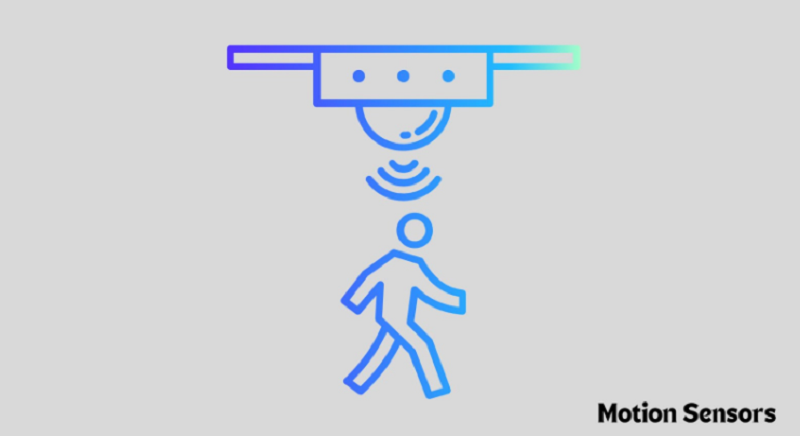
This sensor could be either an ultrasonic, infrared sensor or PIR sensor.
1. Signal Processing Unit: It is the unit that takes care of the signals received from the sensor and decides what needs to be done.
2. Power Supply: It is maintained in operating condition by the flow of energy; that is, it continues the operation of the circuit.
3. Output Device: These are devices that, on sensing motion, act, such as the sounding of buzzers, lighting, or operation of actuators.
All these form a reliable and effective circuit for motion detection to be used while triggering responses in most ambient conditions.
Motion sensors are quite diligent in keeping watch over the environment and sending signals to the circuit in case of motion. The circuit receives the signal and initiates an appropriate response, hence part and parcel of most modern systems.
1. Automation Systems: The smart home motion sensor circuits are therefore used for automating the lighting system, and hence, the light is put on or off, given the presence in a room.
2. Role in Security Systems: Motion sensors are the first line of detection for unauthorized access and actuate alarms or surveillance cameras.
3. Energy Efficiency Contribution: The circuits save energy through reduced usage of manual control over lighting and HVAC systems.
In residential, industrial, and commercial applications, the functionality, security, and efficiency of motion sensor circuits have greatly enhanced the features of modern electronic designs.
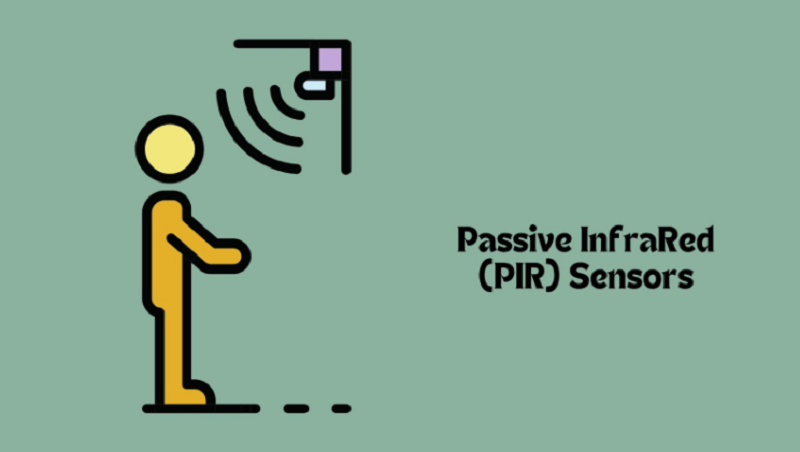
Passive InfraRed (PIR) Sensors are one of the most widely used motion detectors. They can detect infrared radiation from warm living organisms. If there is a warm object coming into view, the infrared energy will change and this signals movement.
The pyroelectric material responding to variations in temperature makes up the heart of the device. Fresnel lenses are deployed in most sensors for directing infrared waves and, by that means, improving sensitivity as well as range. It provides accuracy and low power when applied to security lights as well as automatic doors with PIR sensors.
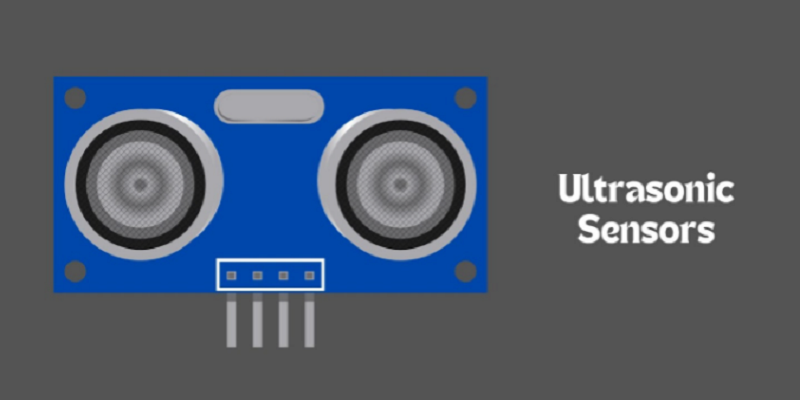
Ultrasonic sensors generate high-frequency acoustic waves that bounce off or return as reflected waves to the sensor. They detect moving targets by measuring time to discern when the reflected waves may return.
It is excellent in motion detection, especially through opaque objects or in low light. They are very much used in parking assist systems and industrial automation for precise motion detection. Their wide applications result from their ability to function in many conditions.
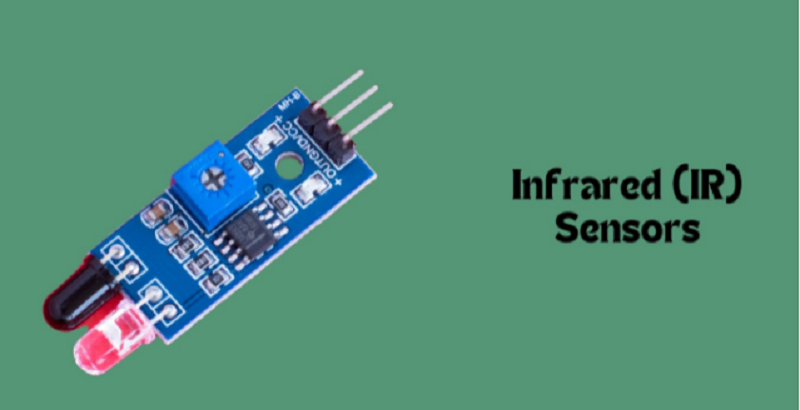
Infrared sensors emit infrared radiation from moving objects around them to detect such objects. They do this, unlike PIR sensors, by reflecting infrared radiation around them from the moving object within their scope.
They are widely utilized in proximity detection and touchless controls of electronics. Thus, one can have an automatic shutdown of the screen when a person walks away. Since they are simple and work so effectively, they are used in robotics and interactive displays.
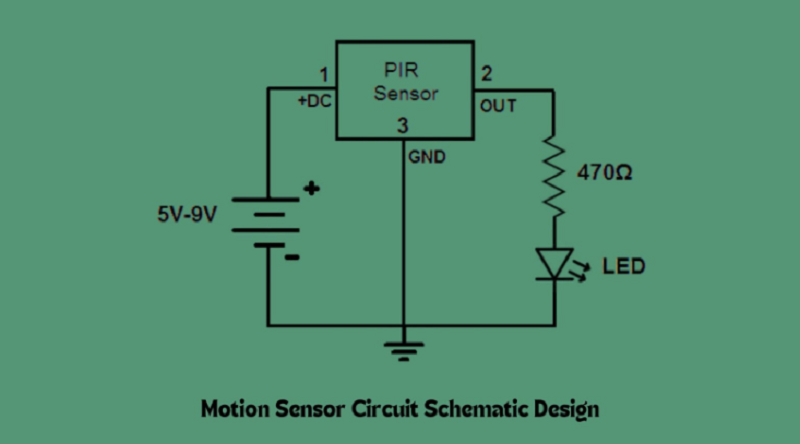
First of all, one has to understand the schematic layout and symbols of a given design. A motion sensor circuit diagram is a visual way to represent the components and connections within the circuit; hence, engineers can easily plan and implement their design.
Most motion sensor circuits follow standard layouts for a simple yet fully functional circuit. They would, therefore, have a power supply, possibly a motion sensor (PIR or ultrasonic), signal-processing units, and output devices. A basic motion-sensing circuit for lighting might diagrammatically represent a sensor whose output is coupled to a relay or a transistor that switches on light.
Circuit symbols are very important in reading and designing the circuit of a motion sensor. Identification of the symbol of a motion sensor in a circuit helps one understand what type of sensor is used and how it has been connected. For example:
1. A PIR sensor can be generally represented visually by a rectangle with wavy lines to show that it detects infrared radiation.
2. The ultrasonic sensors can use wave-like symbols to represent sound waves.
By learning these symbols, an engineer can read and manipulate circuit diagrams far more rapidly to ensure the designs will do what they're intended to do.
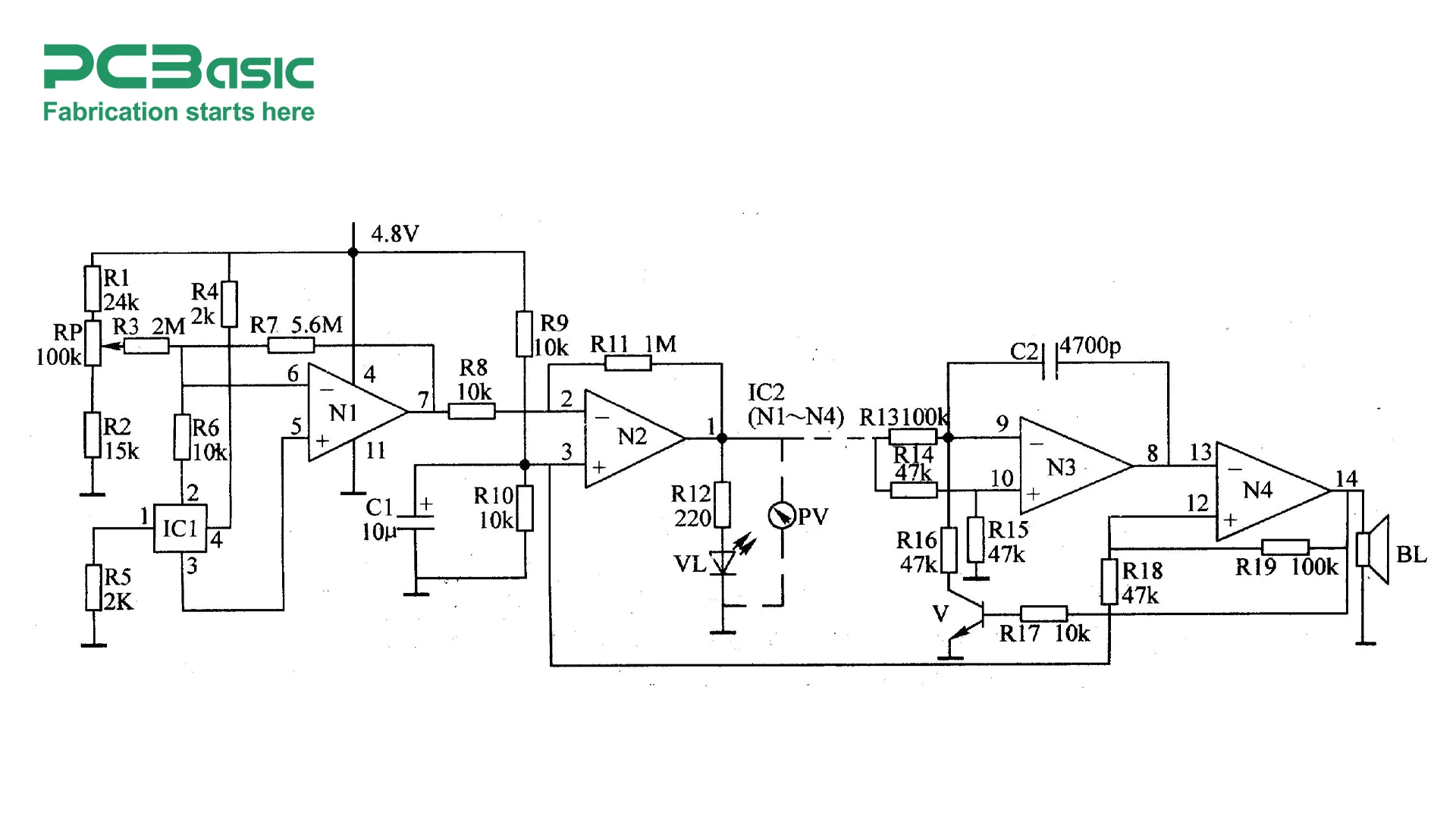
A good schematic has tremendous value in the implementation and debugging phases. The arrangement will ensure that every component is placed and connected in such a way as to minimize error possibilities in assembly. This will also result in better reliability and efficiency of circuitry through a systematic layout with the right connections.
In short, schematic diagrams of the motion sensor circuit are very important to a designer. Unless one knows how to read circuit schematics and symbols, one cannot build these systems; thus, in modern electronics, a necessity is such circuits.
The 555 timer is an integrated circuit that is mainly utilized for the design of very simple motion detector circuits, which can be configured to sample signals from motion sensors and thus generate outputs to activate, for example, lights or an alarm.
To create a 555 timer motion detector, the following are needed:
1. The 555 Timer IC is the processing component that runs the signal.
2. Resistors and Capacitors are used to time and condition the signal.
3. Motion Sensor: usually a PIR sensor or equivalent to sense motion.
4. Transistor or Relay: used to control device output.
5. Power Supply: an appropriate voltage source to operate the circuit.
1. Sensor Signal Processing: The motion sensor takes in the movement and sends the signal to the 555 timer.
2. Timer Configuration: The 555 timer processes the signal and gives the output pulse when motion is sensed.
3. Output Activation: This output from the timer will activate a connected device, say LED or alarm.
This simple setup makes it an ideal setup for a beginner's kit as it offers a functional motion detector using a minimum number of parts.
For high-voltage applications, designing a 220V motion sensor circuit requires extra safety measures and components to handle the increased power.
1. Insulation: Use properly insulated parts to prevent electrical shock.
2. Fuses and Circuit Breakers: Mount these to protect the circuit from power surges.
3. Proper Grounding: The circuit must be grounded to prevent unsafe situations.
1. High-Voltage Components: Use relays and transformers rated for 220V applications.
2. Motion Sensor Integration: Connect the control unit to either a PIR or an ultrasonic sensor.
3. Load Management: Design the circuit to control high-power devices such as lights or fans.
High-voltage motion sensor circuits are applied in a large number of industrial and commercial fields where strong operation is desired. They are rather simple to implement, provided that all the safety guidelines and proper components are followed.
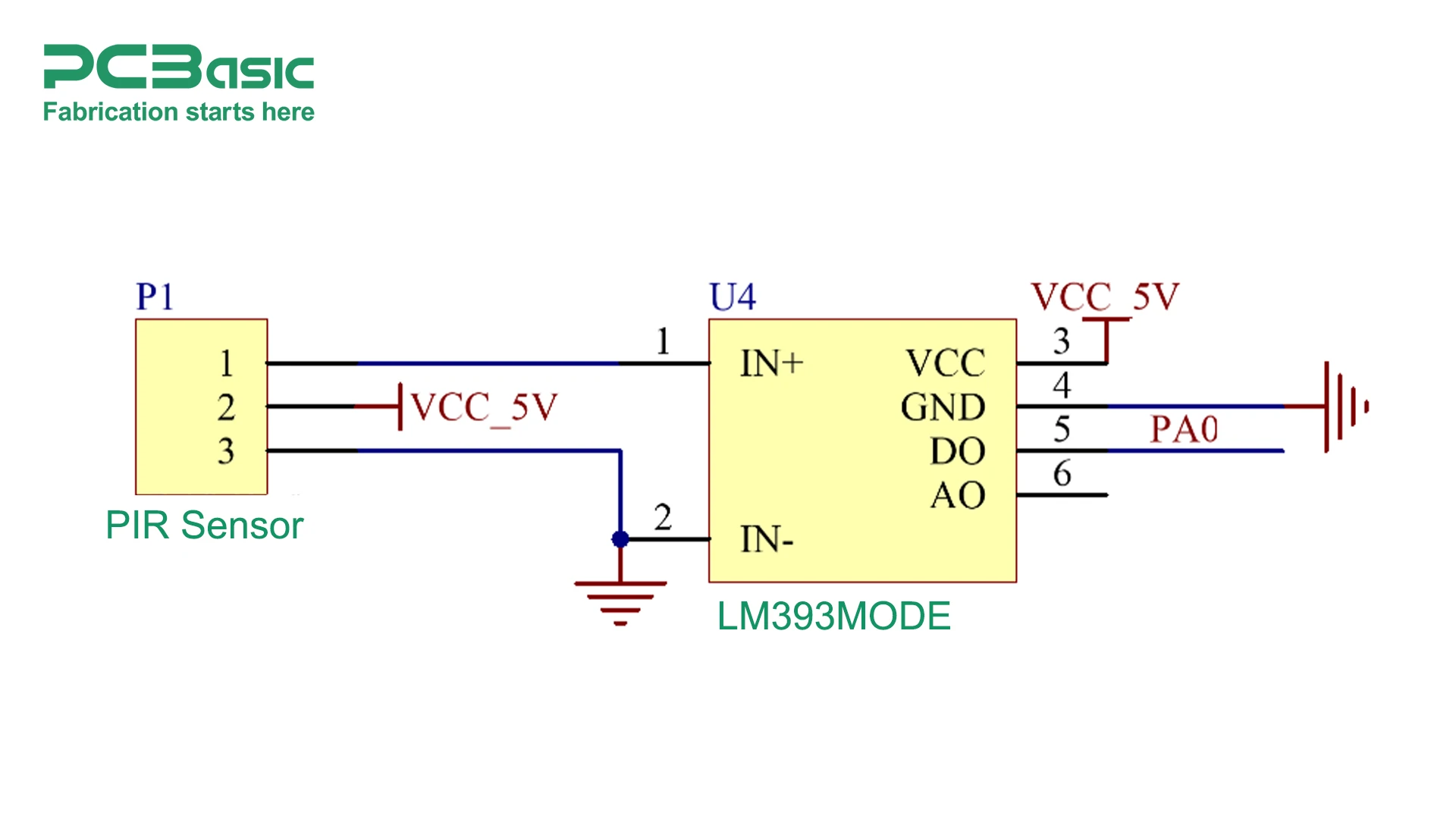
The most basic feature in today's modern security systems definitely has to be the motion sensor circuits. They really form the backbone for alarms and surveillance setups that detect unauthorized motions by alerting in real-time. From triggering cameras to sounding an alarm, this circuit really does provide a very important layer of protection for residences and commercial establishments.
The most critical part of industrial automation comes through the use of motion sensors. They keep watch on the machines and find any possible problems in real time. It ensures high efficiency, low downtime, and safety for the workers inside the automated environment.
Beyond security and industrial applications, motion sensor circuits fall in the category of home automation and consumer electronics. This opens doors to smart lighting, energy efficiency in appliances, and touchless interfaces, thereby reinventing the way people interact with technology. Its versatility and reliability in its features have established it as a cornerstone of innovation in most fields.
Motion sensor circuit design requires attention to detail and a systematic approach to design. This can be realized by selecting the appropriate components, addressing common issues, and optimizing the PCB layout so as to create robust designs.
The success of your circuit starts with the selection of components. Sensors should be chosen for the particular application: PIR for detecting body heat, ultrasonic for measuring distances, and infrared for proximity. A stable power supply and other high-grade assisting components, such as resistors, capacitors, and ICs like a 555 timer, work with basic circuits. Designs can be made more advanced using a microcontroller for more control over the circuit and better flexibility.
Testing and debugging form an integral part of the design procedure:
1. Sensor Calibration: Sensitivity setting calibration as required for the range in question and environment.
2. Interfering Signals: Noisy signals may be smoothed using decoupling and good shielding.
3. Connectivity Problems: Solder joints and other connections and PCB tracks could be faulty or discontinuous.
Methodical debugging saves valuable time and ensures that it meets the performance as set.
An efficient PCB design offers long-lasting performance to motion sensor circuits. Focus on:
1. Compact layout to minimize signal loss.
2. Including grounding planes to minimize electromagnetic interference (EMI).
3. Incorporating heat dissipation measures for circuits handling higher currents.
It's easier to add test points during design, which makes troubleshooting and refinement easier later on.
Modern technologies, offering solutions in terms of automation, security, and energy savings, highly depend on motion sensor circuits. So, it is good to understand the principle by which they work, select proper components, and fine-tune your designs to really harness their full potential.
Whether one begins with the most fundamental 555 timer circuit or moves on to high-voltage designs, the requirement is for experimentation and practice. Learn more about PCB design and motion sensors from these additional resources, and further develop your skills to bring to life great projects.

Assembly Enquiry
Instant Quote
Phone contact

+86-755-27218592
In addition, we've prepared a Help Center. We recommend checking it before reaching out, as your question and its answer may already be clearly explained there.
Wechat Support

In addition, we've prepared a Help Center. We recommend checking it before reaching out, as your question and its answer may already be clearly explained there.
WhatsApp Support

In addition, we've prepared a Help Center. We recommend checking it before reaching out, as your question and its answer may already be clearly explained there.
